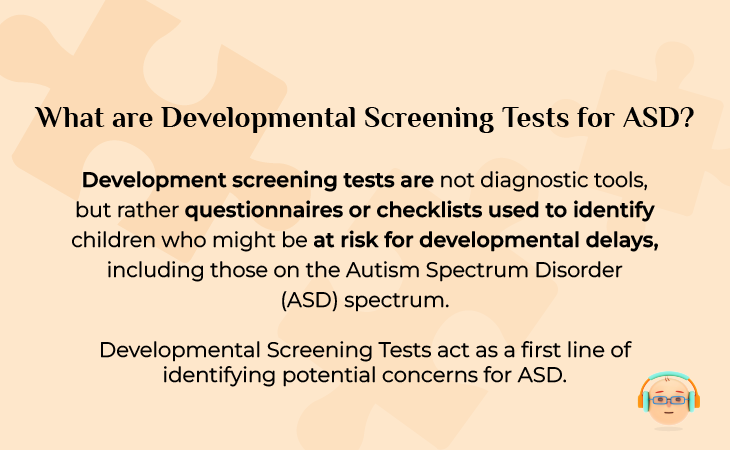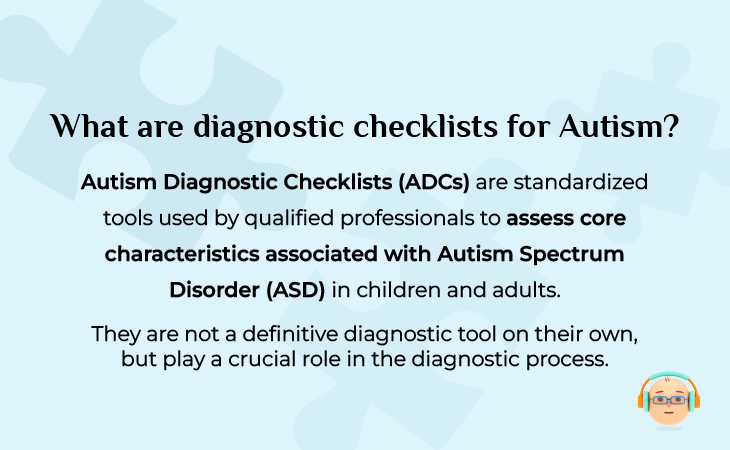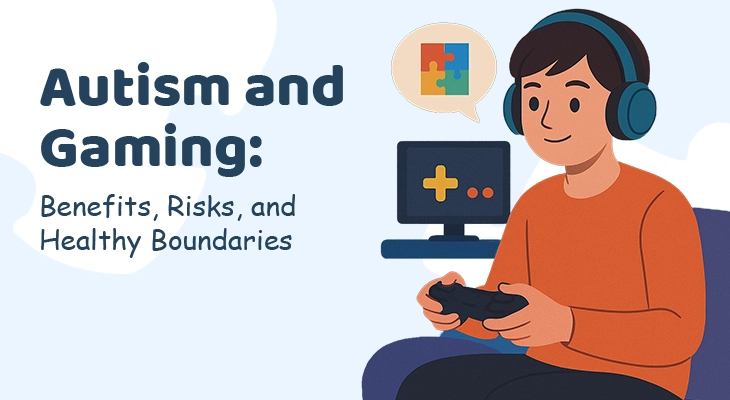Unlike many physical ailments where a single test provides a clear answer, diagnosing Autism Spectrum Disorder (ASD) involves a more intricate process. Conditions like a broken bone or strep throat often present with distinct symptoms and can be confirmed through straightforward medical tests like X-rays or throat swabs. This provides parents with a definitive answer and a path forward.
ASD, however, manifests in a spectrum of challenges related to social interaction, communication, and repetitive behaviors. These characteristics can vary greatly between individuals, making diagnosis a multi-faceted approach. There’s currently no single medical test that can definitively diagnose ASD. This can be frustrating for parents who suspect their child might be on the spectrum as they might yearn for a clear-cut answer, similar to the immediate confirmation an X-ray provides in the case of a fracture.
While this multi-faceted approach offers a thorough assessment, it can feel like a lengthy process compared to a single medical test. This extended timeframe can heighten the anxiety and uncertainty parents experience.
Therefore, navigating the process of diagnosing ASD can feel like venturing into uncharted territory. To shed light on this intricate journey, let’s delve into the steps involved in effectively diagnosing Autism Spectrum Disorder.
Table of Contents
- Why is there no single specific test for ASD?
- The Road to Autism Diagnosis: A Step-by-Step Approach
- Developmental Screening Tests for Autism Diagnosis
- Diagnostic Checklists for Autism Diagnosis
- Medical Tests Used in Autism Diagnosis
- Supplemental Tests Used in Autism Diagnosis
- Did You Know?
- Conclusion
- References
Why is there no single specific test for ASD?
ASD is a complex neurodevelopmental disorder affecting individuals’ social interaction, communication, and repetitive behaviors. There aren’t specific tests for ASD because:
- Spectrum of presentations: ASD manifests differently in each person. Hence there’s no single set of symptoms that guarantees a diagnosis.
- Focus on behavior: Unlike some conditions with biological markers, ASD diagnosis revolves around observing and evaluating a child’s behavior and communication patterns.
The Road to Autism Diagnosis: A Step-by-Step Approach
Diagnosing Autism Spectrum Disorder (ASD) often follows a staged process:
- Stage 1 – Initial Screening: During routine checkups, healthcare providers utilize developmental screening tools to assess a child’s progress in various areas. This initial step helps identify potential concerns.
- Stage 2 – In-Depth Evaluation: If concerns arise from the screening, a more comprehensive evaluation is recommended. This typically involves the use of an Autism Diagnostic Checklist (ADC). Different versions of this checklist exist, but all aim to assess core areas of ASD like social communication, repetitive behaviors, and restricted interests. Scores from these checklists provide valuable insights, often leading to a diagnosis in many cases.
- Stage 3 – Ruling Out Other Conditions: Occasionally, a child’s symptoms may overlap with other medical conditions that can mimic ASD. In such scenarios, doctors might recommend additional medical tests. While these tests don’t directly diagnose ASD, they serve a crucial purpose: identifying biomarkers indicative of other underlying conditions. This additional information helps refine the diagnosis and ensures a more accurate picture.
- Alongside Stage 2 & Stage 3 – Identifying Potential Contributing Factors: Supplemental tests play a supportive role in the diagnosis of Autism Spectrum Disorder (ASD), but they are not standalone diagnostic tools. These tests aim to provide additional information to healthcare professionals and can offer insights into potential contributing factors or areas requiring further evaluation.

Download Download & share this infograph card in your network [Free Download]
Developmental Screening Tests for Autism Diagnosis
Developmental screening tests in autism are questionnaires or checklists used to identify children who might be at risk for developmental delays, including those on the Autism Spectrum Disorder (ASD) spectrum. They are not diagnostic tools, but rather act as a first line of identifying potential concerns.
Here’s a breakdown of developmental screening tests for autism:
- Function: They don’t diagnose ASD, but flag potential delays for further evaluation.
- Focus: These tests assess areas like communication, social skills, motor skills, and cognitive development.
- Benefits: Early detection allows for early intervention which can significantly improve a child’s outcomes.
When are developmental screening tests done and who conducts them?
Developmental screening tests are done from ages 9 months onwards during wellness visits. Developmental screening tests are done by:
- Early childhood teacher
- Healthcare provider
- Other trained provider
What are the lists of tests under developmental screening tests?
- M-CHAT-R (Modified Checklist for Autism in Toddlers): This test is recommended if you suspect any developmental delay or disorder, stimming issues etc.
- SCQ (Social Communication Questionnaire): This test is recommended when the child has milestone delays or communication and other social concerns
- ASQ (Ages and Stages Questionnaires): If you suspect potential delays or concerns in development stages of a child, then this test is recommended
- PEDS (Parents’ Evaluation of Developmental Status): This test is recommended if you suspect developmental concerns
To learn more about the methodology and rating scale of each test, read our blog Decoding Autism: Essential Tests and Key Indicators You Can’t Afford to Ignore
If a developmental screening test raises concerns, a healthcare professional will recommend further evaluation by a specialist who can conduct a comprehensive assessment for ASD diagnosis.

Download Download & share this knowledge card in your network [Free Download]
Diagnostic Checklists for Autism Diagnosis
Diagnostic checklists for ASD are tools used by specialists to gather information about a child’s behavior and development. They are not standalone tests for diagnosis, but rather act as the next piece of the puzzle in a comprehensive evaluation.
Here’s a closer look:
- Purpose: Checklists help identify potential areas of concern related to social communication, repetitive behaviors, and restricted interests, all core aspects of ASD.
- Content: They typically consist of a series of items that describe specific behaviors or skills. Parents or caregivers rate how often a child exhibits these behaviors.
- Benefits: Checklists provide a structured way to collect information and offer a starting point for further evaluation. They can also be helpful for parents to track a child’s progress over time.
When are diagnostic checklists done and who conducts them?
Diagnostic checklists are done whenever there is a concern and there is no specific age limit for them. Diagnostic checklists are done by:
- Developmental pediatricians
- Child psychologists
- Other trained providers
What are the lists of tests under diagnostic checklists for ASD?
- ADI-R (Autism Diagnostic Interview-Revised): The ideal age to conduct this is 4 years and above, and the test consists of a series of 93 questions that focus on 3 main areas – communication and language skills, social interaction issues, repetitive behaviors.
- ADOS-2(Autism Diagnostic Observation Schedule, Second Edition): Recommended for ages 12 months and above, the ADOS-2 consists of four different modules designed to provide the most appropriate test for an individual at a certain age or functional level.
- CARS-2 (Childhood Autism Rating Scale): This test uses a methodology of direct observation and evaluation of an individual’s behavior in various domains, including social interactions, communication, and repetitive behaviors. The test can be conducted at any age from birth to 6 years of age and above.
- GARS-3 (Gilliam Autism Rating Scale | Third Edition): This test leans on a combination of:
- Standardized Rating Scales: These scales use questionnaires filled out by parents or caregivers to assess a child’s behaviors.
- Clinician Observations: While not the sole focus, a clinician may also observe the child’s interaction and behaviors to supplement the GARS-3 results.
To learn more about the diagnostic tools, the methodology and rating scale of each test, read our blog Decoding Autism: Essential Tests and Key Indicators You Can’t Afford to Ignore

Download Download & share this knowledge card in your network [Free Download]
Medical Tests Used in Autism Diagnosis
While behavioral assessments and clinical evaluations are central to diagnosing autism, medical tests also play a valuable role as these tests aim to:
- Rule out other conditions: Medical tests can identify underlying medical issues that might cause similar symptoms to autism. This helps ensure an accurate diagnosis.
- Uncover potential contributing factors: Some tests might reveal biological factors that could influence an individual’s behavior and development, even if they don’t directly cause autism.
Medical tests could be:
- Genetic tests: Identify underlying genetic conditions potentially linked to autism-like features. These are tests recommended by American Academy of Pediatrics (AAP)
- Metabolic tests: Check for imbalances in body chemistry that could impact development and behavior. These are tests referenced by American Academy of Pediatrics (AAP)
- Other testing options: These are tests suggested by American Academy of Pediatrics (AAP). Tests such as neuroimaging have been a valuable tool in understanding the neurobiological basis of autism spectrum disorder (ASD) by allowing researchers and clinicians to investigate the structure, function, and connectivity of the brain in individuals with ASD
When are medical tests done and who conducts them?
Medical tests are done whenever there is a concern and, depending on the type of tests, are conducted by:
- Pediatrician
- Developmental pediatrician
- Pediatric neurologist
What are the lists of medical tests used in diagnosis of ASD?
| Genetic Testing Recommended by American Academy of Pediatrics (AAP) |
Metabolic Testing Referenced by American Academy of Pediatrics (AAP) |
Other Testing Options Suggested by American Academy of Pediatrics (AAP) |
|
|
|
To learn more about the various medical tests used in diagnosing ASD, read our blog Decoding Autism: Essential Tests and Key Indicators You Can’t Afford to Ignore
What are the lists of medical tests used in diagnosis of ASD?
| Genetic Testing Recommended by American Academy of Pediatrics (AAP) |
|
| Metabolic Testing Referenced by American Academy of Pediatrics (AAP) |
|
| Other Testing Options Suggested by American Academy of Pediatrics (AAP) |
||
|
To learn more about the various medical tests used in diagnosing ASD, read our blog Decoding Autism: Essential Tests and Key Indicators You Can’t Afford to Ignore

Download Download & share this knowledge card in your network [Free Download]
Supplemental Tests Used in Autism Diagnosis
Supplemental tests in autism diagnosis are tools that aim to provide additional information to healthcare professionals beyond the core diagnostic process but don’t directly confirm or rule out ASD on their own. Their purpose is to identify:
- Potential contributing factors: They may provide clues about underlying biological mechanisms that could be relevant to an individual’s development and potentially influence their ASD presentation.
- Areas requiring further investigation: Unusual results on a supplemental test might indicate a need for more in-depth evaluation in specific areas.
Which tests come under supplemental testing?
- FRAT®: This test identifies autoantibodies to the folate receptor alpha, which results in cerebral folate deficiency. This is an important test because correction of cerebral folate deficiency can help mitigate autistic symptoms.
- EarliPoint Evaluation: This tool uses eye-tracking technology to analyze a child’s visual attention patterns. Deviations from typical patterns might suggest a need for further investigation of social communication skills, but doesn’t definitively diagnose ASD.
- StrandDX: This test involves analyzing a hair sample to assess an individual’s exposure history and metabolic response through the levels of various elements present. While it investigates potential environmental influences on development, StrandDX is not a conclusive diagnostic tool for ASD.
Conclusion
Unlike diagnosing conditions with distinct physical symptoms, identifying Autism Spectrum Disorder (ASD) involves a multi-faceted approach. There is no single definitive test, and the process can feel lengthy compared to a straightforward medical examination. This blog post has shed light on the various steps involved in diagnosing Autism Spectrum Disorder.
Remember: While this blog post has provided information on the diagnostic process, consulting a qualified healthcare professional is essential for any concerns regarding your child’s development and to discuss the most appropriate course of action.





